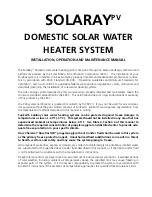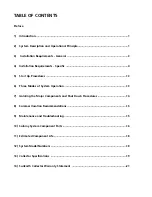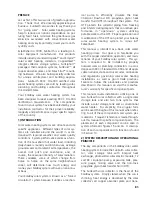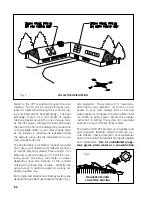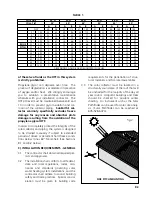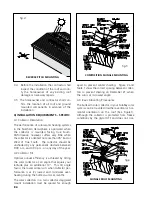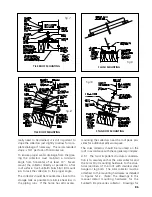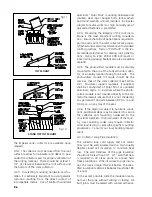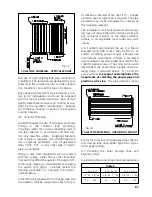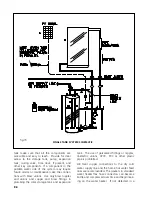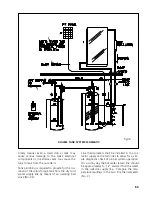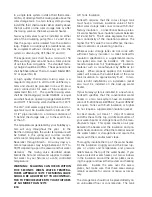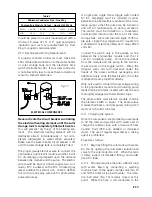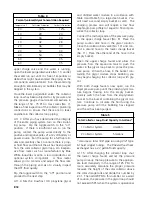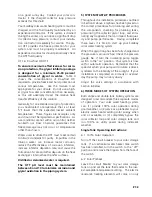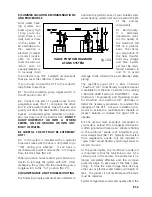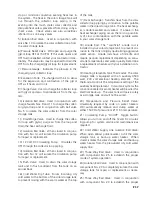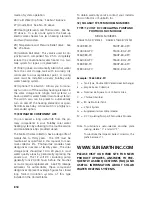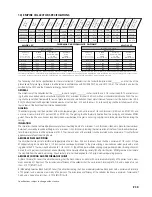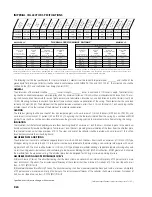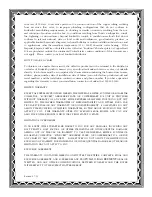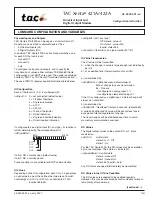
P.13
on a good sunny day. Contact your solar con-
tractor if the charged collector loop pressure
exceeds this threshold.
Your SolaRay solar water heating system must be
charged and the fluid quality maintained by an
experienced contractor. If the system is drained
during the winter, or you notice a significant drop
in collector loop pressure, contact your installa-
tion contractor immediately for service. The gly-
col HTF provides the freeze protection for your
system and must be properly maintained. An
experienced contractor should periodically check
the HTF fluid quality.
4.11.6 Dowfrost HD HTF
To ensure maximum effectiveness for corro-
sion protection, the glycol inhibitor package
is designed for a minimum 25-30 percent
concentration of glycol in water.
Table 4
shows the concentrations of Dowfrost HD
required to provide freeze and burst protection at
various temperatures. Use the mixture most
appropriate for your climate. Do not use a high-
er glycol to water concentration than necessary,
as this will adversely impact the relative heat
transfer efficiency of the solution.
Generally, for an extended margin of protection,
you should select a temperature that is at least
5°F lower than the expected lowest ambient
temperature. These figures are examples only
and should not be regarded as specifications. As
use conditions are not within our control, neither
SunEarth nor Dow Chemical guarantees that
freeze damage may not occur at temperatures
other than shown.
Water used to dilute the HTF must meet certain
minimum standards for purity. Impurities in the
dilution water can increase metal corrosion,
reduce the effectiveness of corrosion inhibitors,
increase inhibitor depletion rate, and cause the
formation of scale and other deposits on the heat
exchanger's internal heat transfer surfaces.
Distilled or deionized water is required.
The HTF pH level must be maintained
between 8 and 10 to minimize corrosion and
glycol oxidation in the piping system.
5) SYSTEM START-UP PROCEDURES
Throughout the installation procedures outlined
in Section 4 above, emphasis has been placed on
the correct procedures for plumbing and wiring
the components, checking for plumbing leaks,
pressurizing the collector glycol loop, and elimi-
nating any trapped air that can impact fluid qual-
ity and pump performance. Having completed
these tasks it is time to start up your SolaRay
solar water heating system.
When the glycol loop has been fully charged and
the pressure is around 25 psi (check the pressure
gauge, No. 7) turn the circulating pump toggle
switch to the "on" position. Your system is now
set for automatic operation. Remember that the
speed at which your pump will circulate is direct-
ly related to the intensity of the sunlight. If your
installation is completed on a cloudy or overcast
day the pump may run very slowly.
Adjust the valve settings in accordance with
Section 6 below.
6) THREE MODES OF SYSTEM OPERATION
Both single and double tank Solaray systems are
designed to accommodate three separate modes
of operation. Your solar water heating system
can, (1) provide 100% solar operation during
good weather, or (2) serve as a preheater to your
electric water heater adding solar energy when
and as available, or (3) completely bypass the
solar collector loop and solar storage tank and
run 100% on utility power during inclement
weather.
Single Tank Operating Instructions:
6.1 100% Solar Operation:
Turn off the circuit breaker to your solar storage
tank. If a mechanical water heater time switch
has been installed, turn the switch to the "off"
position and remove the trippers from the face of
the switch.
6.2 Solar Preheat
Leave the circuit breaker to your solar storage
tank on and set the tank thermostat to the low-
est acceptable temperature setting. The electric
resistance heating elements will come on only

